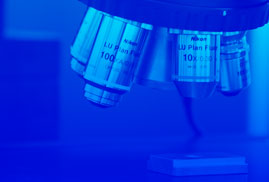This thesis discusses the design of active aerostatic thrust bearings, with the focus on developing design tools for simulating, analyzing and optimizing their performance, for nanometer position control, fast tracking and disturbance rejection. The theoretical background of these tools is presented and their accuracy is validated with experimental results.
Active aerostatic bearings extend the bearing function to non-contacting actuator function by means of piezoelectric actuators that modify the shape of the bearing surface, thus affecting the pressure distribution and the bearing force. The strong coupling between the structural flexibility of the bearing plate, the pressure distribution, the piezoelectricity and the control require the concurrent consideration of all these effects when analyzing the performance of active air bearings. A multiphysics finite element model with strongly coupled formulation has thus been developed to simulate the static and dynamic characteristics of active air bearings.
Piezoelectric actuators offer very good characteristics for position control, achieving high accuracy and bandwidth. However, two effects may limit the performance, namely the non-symmetric hysteresis in the elongation-voltage relationship and the amplification into vibration of the electric noise in the voltage signal. A new model for non-symmetric hysteresis has been developed and used for real-time compensation of hysteresis, showing a relevant improvement of position tracking accuracy at high frequencies. The undesired effect of electrical noise at high frequencies is reduced by implementing an analog filter (made from hardware) for the voltage applied to the piezoelectric actuator.
The tools for optimizing the actuator characteristics of active air bearings discussed above are not sufficient for analyzing the real performance of the system. When nanometer accuracy is aimed, there exist a number of possible disturbances that can limit the performance of the system, from floor vibration to electrical noise on sensors and actuators. The variety and different nature of these disturbances (i.e. different power spectra, acting on different points in the closed-loop system) require more advanced tools than frequency response functions for a straightforward analysis of the system, both at design and prototype evaluation stage. Dynamic Error Budgeting method has been successfully implemented to evaluate the performance of active air bearing prototypes. Active air bearings are not final industrial products, but need to be integrated into more complex machines. The design challenges in developing an active aerostatic slide with active bearings for achieving sub-micrometer precision in all degrees-of-freedom have been analyzed. A first prototype has been built, and the feasibility of multi-degree-of-freedom control with active air bearings has been demonstrated.


